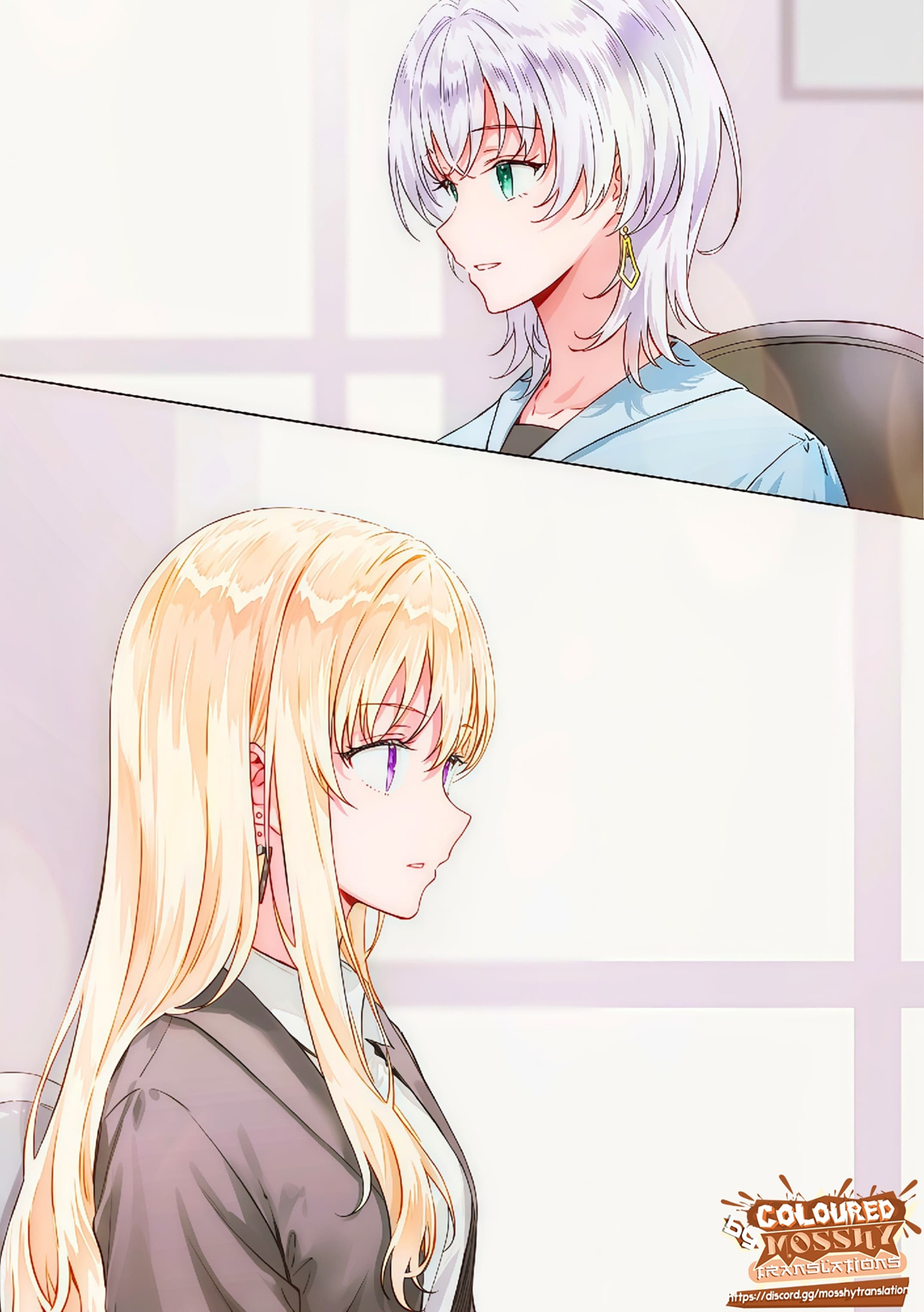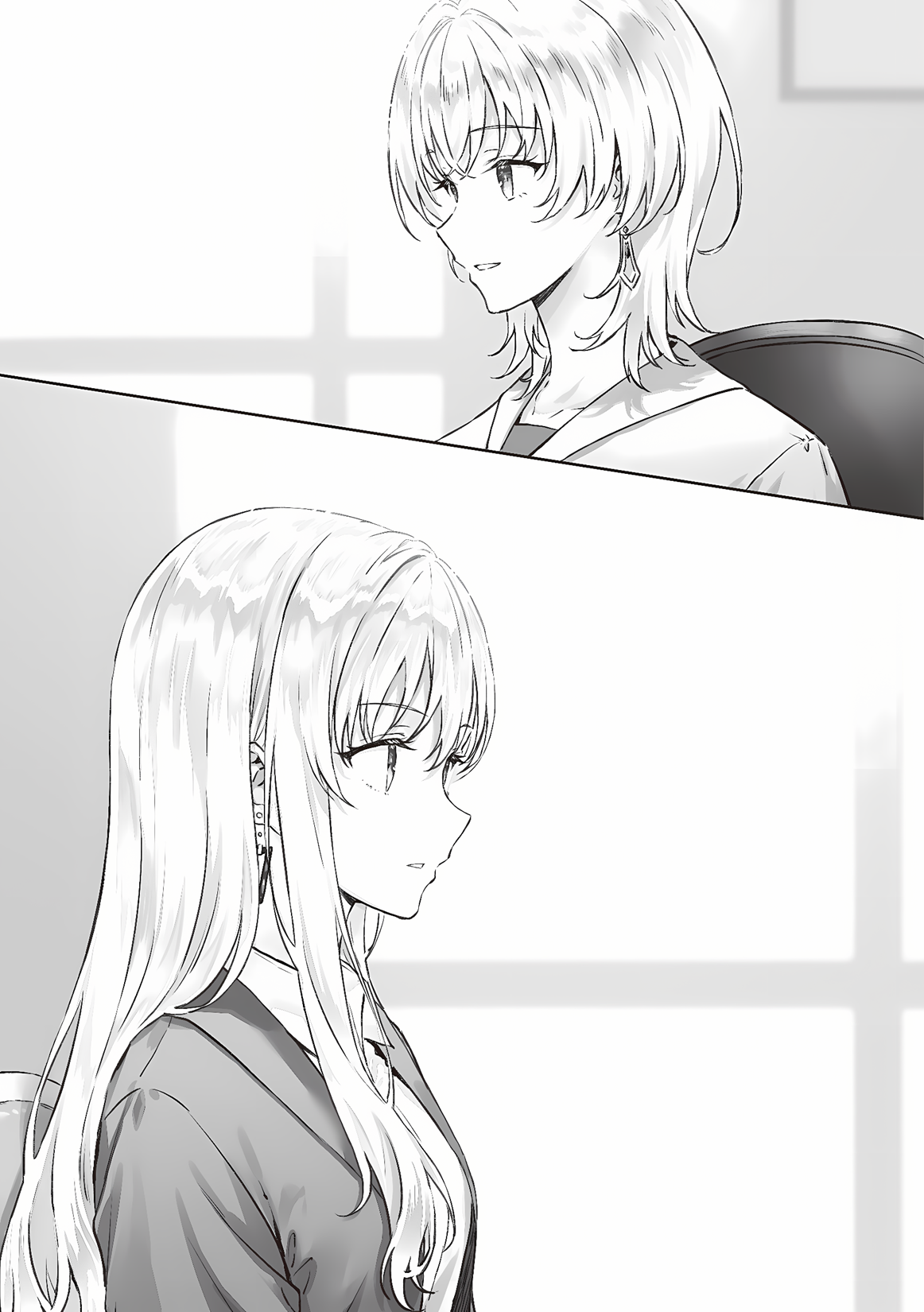● March 28 (Monday) Saki Ayase
“Lucca Design. Studio.”
A logo in a decorative font typical of a design agency catches my eye.
Stepping off at Nakano-sakaue Station for the first time, I make my way to the third floor of a roughly five-story office building. Unlike a bookstore, the entrance exudes an unmistakable corporate atmosphere, instinctively putting me on edge.
“Excuse me,” I call out cautiously as I open the door.
The room spans about the size of two eight-mat tatami rooms combined, divided by partitions resembling folding screens—though I’m not sure of the exact term. With the ceiling exposed, it doesn’t feel claustrophobic, but the screens block lines of sight effectively. An older man suddenly emerges from behind one, greeting me with a warm “Welcome.”
“Ah, um, Aya—Asamura Saki desu.”
Oh no. Since this is our first meeting, I can’t deviate from the name on my resume. It’s no longer Suisei High School, after all. I recall “Ayase Saki” inscribed on my diploma with a touch of nostalgia—that was likely the last time my official name appeared as “Ayase.” Still, I hold some attachment to using my mother’s maiden name professionally; it feels endearing, especially since he still calls me by it.
I refocus on the man before me.
“Uh, I have an appointment with Akihiro-san.”
“Ah, yes, yes. We’ve been expecting you. This way, please.”
He guides me forward, leading through a corridor lined with partitions slightly taller than myself until we reach a meeting area with chairs facing each other across a table.
“Could you wait here? I’ll call Akihiro-san now.”
“Ah, yes.”
The man vanishes behind the partition, and I settle into the offered chair.
This place—“Lucca Design. Studio”—is a design agency run by Akihiro Ruka-san.
A slight shiver courses through me. It’s not the cold; I’m just nervous. Anyone would feel this way when venturing into something new, right?
Quick footsteps approach, accompanied by a lively voice as a young woman appears from behind the partition.
“Yo, sorry, sorry, did I keep you waiting?”
It’s Akihiro Ruka-san, apparently a longtime friend of Melissa’s. She handled the venue design and posters for Melissa’s concert in Japan. Just as when we first met, she rushes in, her wolf-cut hair with blue highlights swaying—she’s strikingly beautiful in a cool, somewhat boyish way.
I hurriedly stand and bow.
Ruka-san plops into the chair across from me. Huh?
“You’re here for the interview, right? Let’s get started.”
“Ruka-sa—Akihiro-san, um, you’re the president, right?”
“Yup, that’s me. But just call me Ruka. It’s a small company, and everyone calls me that.”
Even so, addressing the president of the company I’m interviewing with by her first name feels like quite a hurdle for me…
“We look at resumes, but after that, I make the call. Just relax, okay? By the way, I’m impressed you came to a place like ours, so different from your field. Tsukino-miya, right? You could’ve gotten an internship at a bigger company.”
The interview unfolds like an extension of casual small talk.
I think Ruka-san is trying to ease my nerves, but honestly, I’m more anxious than when I applied for the bookstore job. As she mentioned, my university major and a design agency are worlds apart, and I’m painfully aware of that.
I know it’s unusual to ramble in an interview, but our conversation somehow shifts into something resembling a career consultation. I sense she’s guiding it that way, yet I wonder if this is how interviews are meant to go.
“I’m not at an art university, and honestly, I’m not even sure if this is the path I want to pursue… Um, it’s kind of vague, right? I don’t have the skills or a clear vision, and I’m just kind of drifting.”
“Nah, don’t worry about that. Maybe ten years ago, there was this vibe that designers had to come from art or fine arts universities, but it’s not like that anymore.”
“Really?”
“Yup. Things have changed. Equipment and software are available through subscriptions and stuff, and there are people teaching it all clearly on video. As long as you’ve got the drive, the environment’s there for you to learn on your own. Some kids come in ready to work without ever stepping foot in a school.”
“Wow…”
“Also, the scope of what’s needed in design keeps expanding. It’s less about technical drawing skills and more about sensibility, knowledge, that kind of thing. Having a lot of different experiences and a rich background matters a lot. It’s an era where people who are curious and proactive about learning shine. That’s the kind of person I want to hire. Of course, a baseline of drawing knowledge and skills is nice, though.”
Ruka-san explains that she doesn’t expect interns to contribute immediately. She wants me to start with miscellaneous tasks by her side, almost like a secretary. So, it’s fine even if I’m not from an art school.
“If you’ve got the motivation, I’m ready to give you the green light. What do you say? We’d need a month to prepare, so you can start in May.”
I catch my breath—I didn’t expect to be put on the spot like this. For a moment, I close my eyes, gripped by hesitation and anxiety. Choices always seem to strike suddenly. What should I do? The doubt lingers only briefly; I’ve come this far, after all. I open my eyes.
“Please, I’d like to do it.”
On my way back, I stop by the bookstore where I work part-time and let them know I’ll be quitting at the end of April.


















